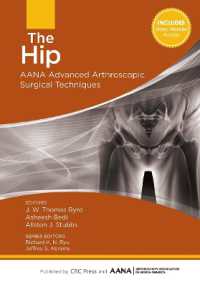Full Description
Explores how indigenous nationhood has emerged and been maintained in the face of aggressive efforts to assimilate Native peoples.
Tribal Worlds considers the emergence and general project of indigenous nationhood in several geographical and historical settings in Native North America. Ethnographers and historians address issues of belonging, peoplehood, sovereignty, conflict, economy, identity, and colonialism among the Northern Cheyenne and Kiowa on the Plains, several groups of the Ojibwe, the Makah of the Northwest, and two groups of Iroquois. Featuring a new essay by the eminent senior scholar Anthony F. C. Wallace on recent ethnographic work he has done in the Tuscarora community, as well as provocative essays by junior scholars, Tribal Worlds explores how indigenous nationhood has emerged and been maintained in the face of aggressive efforts to assimilate Native peoples.
Contents
Acknowledgments
Location of Indian Communities Discussed in this Volume
Introduction
Brian Hosmer and Larry Nesper
Part I. Definitions
1. Tuscarora Political Domains
Anthony F. C. Wallace
2. 'To Renew Our Fire': Political Activism, Nationalism, and Identity in Three Rotinonhsionni Communities
Gerald Reid
3. Kinship as an Assertion of Sovereign Native Nationhood
Christina Gish Hill
4. Marked by Fire: Anishinaabe Articulations of Nationhood in Treaty-Making with the United States and Canada
Heidi Kiiwetinepinesiik Stark
5. Imagining Un-Imagined Communities: The Politics of Indigenous Nationalism
Sebastian F. Braun
Part II. Manifestations
6. Articulating Traditional Future: Makah Sealers and Whalers, 1880-1999
Joshua L. Reid
7. Beyond Folklore: Historical Writing and Treaty Rights Activism in the Bad River WPA
Chantal Norrgard
8. Anishinaabe Gathering Rights and Market Arts: The WPA Indian Handicraft Project in Michigan
Adriana Greci Green
9. We Worked and Made Beautiful Things: Kiowa Women, Material Culture, and Peoplehood, 1900-1939
Jenny Tone-Pah-Hote
Consolidated Bibliography
Contributors Biographies








